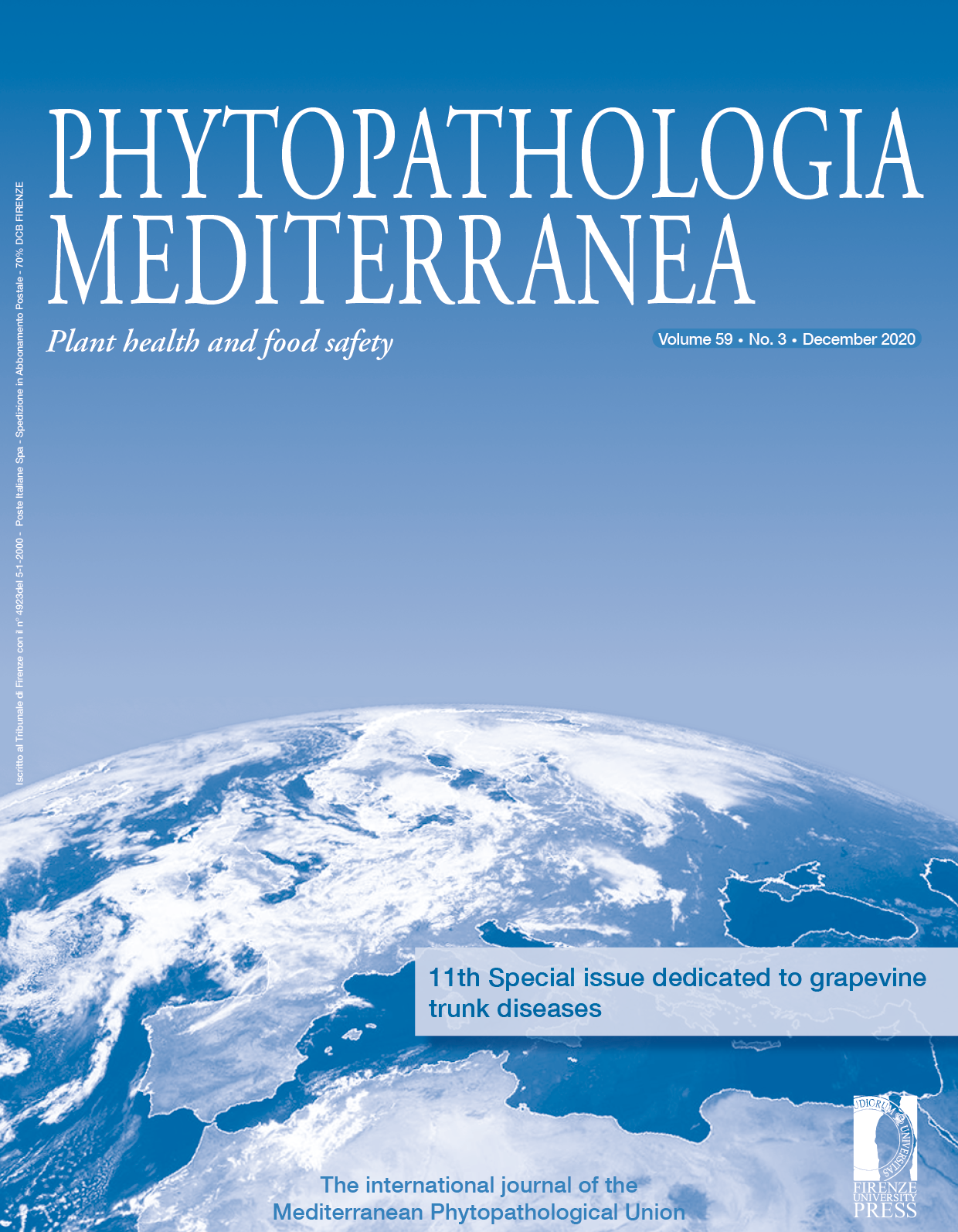Published 2020-10-10
Keywords
- Esca,
- Botryosphaeria dieback,
- Bacillus pumilus,
- Xanthomonas sp
How to Cite
Abstract
Grapevine trunk diseases (GTDs), including Esca and Botryosphaeria dieback, are major factors limiting grapevine productivity and longevity in France. The influence of combined biotic and abiotic stress factors on GTD development is not well understood. This study evaluated individual and combined effects of a biotic factor (bacterium occurrence) and abiotic stress (water deficit), on the pathogenicity to grapevine of the GTD pathogen Neofusicoccum parvum. Co-inoculation of 46 different bacterium strains with N. parvum into growing grapevine-cuttings showed synergistic relationships between several of the strains and the pathogen. Bacillus pumilus (strain S35) and Xanthomonas sp. (strain S45), which cause canker lesions, were selected for testing bacterial and fungal interactions in grapevine, under individual and combined stress conditions. In vitro, each of the bacterium strains neither inhibited N. parvum nor the co-inoculated bacterium strain. None of the three microorganisms degraded lignin, but all three degraded cellulose and hemicellulose. In a greenhouse experiment, 9 months after microbial inoculations in plants under normal and water-restricted conditions, effects on canker formation of water deficit combined with the bacteria and N. parvum interactions were assessed and on N. parvum DNA contents. Synergistic effects of biotic and abiotic stresses were demonstrated. The bacterial infection stress influenced the grapevine/N. parvum interaction by increasing canker lesions and N. parvum DNA contents in plants co-inoculated with B. pumilus and/or Xanthomonas sp. qPCR assays showed that high contents of N. parvum DNA occurred in water-restricted potted vines inoculated with N. parvum, especially in the inoculation zones. These results provide insights into the relative roles of biotic and abiotic stress factors in Botryosphaeriaceae symptom expression, which could assist development of future GTD management.






